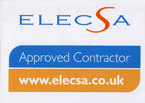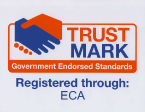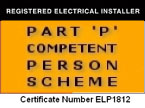Inspection & Testing.
Periodic Inspections & Tests, Electrical Inspections.

What is a periodic inspection?
A Periodic Inspection is an inspection on the condition of an existing electrical installation, to identify (in order of priority) any deficiencies against the national safety standard for electrical installations.
A periodic inspection will:
- reveal if any of your electrical circuits or equipment is overloaded
- find any potential electrical shock risks and fire hazards in your electrical installation
- identify any defective DIY electrical work
- highlight any lack of earthing or bonding
Tests are also carried out on wiring and associated fixed electrical equipment to check that it is safe. A schedule of circuits will also be provided, which is invaluable for a property.
Why is a periodic inspection needed?
Every electrical installation deteriorates with use and age. It is important for the person responsible for the maintenance of the installation to be sure that the safety of users is not put at risk, and that the installation continues to be in a safe and serviceable condition.
According to Government statistics, each year on average 10 people die and about 750 are seriously injured in accidents involving unsafe electrical installations in the home.
When is a periodic inspection needed?
It is recommended that periodic inspection and testing is carried out at least every:
- 10 years for a domestic installation
- 5 years for a commercial installation
- 3 years for caravans
- 1 year for swimming pools
Certificates include - 
British Standards Part P Certificates
- BS Minor Works
- BS Electrical Installation
- BS Fire Detection Systems for Dwellings
Our Services on offer include: -
- Full electrical design services
- Inspection and testing in line with BS7671 requirements
- Periodic inspection reports in line with BS7671 requirements
- Certificate of compliance in line with BS7671 requirements
Electrical Inspections
 Periodic Inspection and Testing is offered in accordance with BS7671 (as amended). This means, in effect, that most systems require certifying every five years. In practical terms and to aid budget management, many of our customers now opt for a 100% visual inspection and 20% test of their installation every year.
Periodic Inspection and Testing is offered in accordance with BS7671 (as amended). This means, in effect, that most systems require certifying every five years. In practical terms and to aid budget management, many of our customers now opt for a 100% visual inspection and 20% test of their installation every year.
Emergency Lighting Inspection
Emergency Lighting is inspected and tested in accordance with the requirements of the 16th Edition IEE Wiring Regulations and BS 5266 Part 1, 1988. The Test Certificate issued is the standard ECA Emergency Lighting Test Certificate
Other instances when a periodic inspection should be carried out are:
- when a property is being prepared to be let
- prior to selling a property or when buying a previously occupied property
Top

 Periodic Inspection and Testing is offered in accordance with BS7671 (as amended). This means, in effect, that most systems require certifying every five years. In practical terms and to aid budget management, many of our customers now opt for a 100% visual inspection and 20% test of their installation every year.
Periodic Inspection and Testing is offered in accordance with BS7671 (as amended). This means, in effect, that most systems require certifying every five years. In practical terms and to aid budget management, many of our customers now opt for a 100% visual inspection and 20% test of their installation every year.



